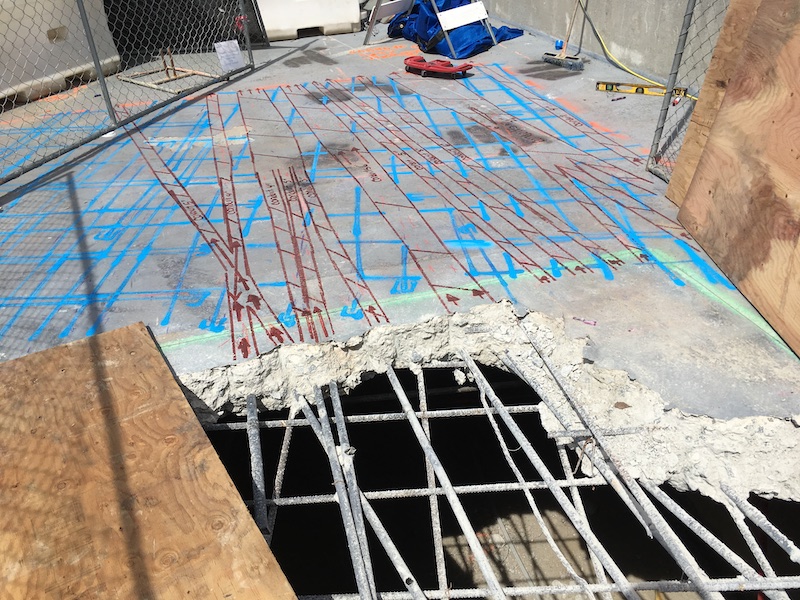The Importance of Expert Concrete Scanning Solutions
The Importance of Expert Concrete Scanning Solutions
Blog Article
Reveal the Transformative Power of Concrete Scanning in Taking Full Advantage Of Effectiveness and Security
Concrete scanning has actually arised as an important device in the construction sector, offering unequaled benefits in enhancing project effectiveness and making certain safety requirements. By making use of sophisticated technology, concrete scanning enables professionals to see beyond the surface area, uncovering hidden intricacies that might affect the structural integrity of a building. The transformative power of concrete scanning depends on its capability to give real-time information and in-depth understandings, revolutionizing exactly how tasks are planned and performed. As we explore the ins and outs of this ingenious technique, a world of opportunities opens up, showcasing a brand-new period of construction practices that focus on accuracy and protection.
Relevance of Concrete Scanning
Guaranteeing the structural honesty and security of building projects begins with the important action of carrying out comprehensive concrete scanning. Concrete scanning is a non-destructive approach used to spot and map subsurface elements within concrete structures. This procedure is necessary in determining potential dangers, such as rebar, post-tension cables, and avenues, that might be hidden within the concrete. By utilizing advanced modern technologies like ground-penetrating radar (GPR) and electromagnetic induction, construction groups can accurately locate these components without creating any damage to the framework.
Additionally, concrete scanning assists in optimizing task timelines and spending plan by staying clear of unanticipated prices and delays that may develop due to unpredicted blockages within the concrete. Ultimately, spending in thorough concrete scanning is an aggressive strategy that improves both effectiveness and security in construction jobs.
Just How Concrete Scanning Works
Concrete scanning operates as an essential device in building tasks by using sophisticated technologies to discover and map subsurface components without triggering architectural damages. Ground Passing Through Radar (GPR) and Electromagnetic Induction (EMI) are two main techniques used in concrete scanning. GPR jobs by producing high-frequency radar pulses into the surface area, which bounce back when they encounter subsurface things or spaces. The moment considered the signal to return suggests the depth and place of the items. EMI, on the various other hand, utilizes electromagnetic areas to identify variations in product make-ups, such as recognizing rebar or channels within concrete frameworks.
During the scanning process, the information gathered is analyzed in real-time, permitting instant recognition of possible dangers or barriers beneath the surface. This details aids in decision-making, making certain that building and construction tasks continue safely and efficiently. Additionally, 3D imaging software application can be made use of to produce in-depth maps of the subsurface aspects, further improving project preparation and execution. By employing these innovative modern technologies, concrete scanning significantly decreases the risk of pricey problems and injuries on building websites.
Benefits of Concrete Scanning
One of the key benefits of concrete scanning is the capacity to discover and situate embedded objects such as rebar, post-tension cable televisions, and conduits accurately. Concrete scanning aids in preparation and developing a lot more efficiently, as it provides accurate details concerning the place and depth of architectural components.

Study: Concrete Scanning Success

In one more case, a construction firm used 3D concrete scanning to evaluate the condition old concrete structures in a historic structure. The detailed scans provided useful insights right into the extent of degeneration and assisted prioritize upkeep initiatives properly. By proactively attending to locations of concern determined with scanning, the firm had the ability to extend the lifespan of the framework and make certain occupant security.
These instance studies underscore the transformative power of concrete scanning in improving efficiency, precision, and safety in construction projects.
Executing Concrete Scanning in Projects
Carrying out innovative scanning modern technologies throughout building and construction tasks has ended up being increasingly necessary for boosting accuracy and safety and security. By incorporating concrete scanning right into task preparation and implementation, building and construction groups can identify potential dangers, such as rebar or post-tension cords, concealed within concrete structures. This aggressive strategy decreases the risk of mishaps, delays, and expensive rework, eventually leading to more efficient job timelines and budget plans.
To apply concrete scanning efficiently, task managers need to collaborate closely with experienced scanning specialists to identify the most suitable scanning methods for the specific job demands. Involving scanning specialists from the onset of a task enables the group to create detailed scanning strategies that resolve essential areas of issue and ensure complete data collection.
Furthermore, including concrete scanning into regular project operations can simplify decision-making procedures, as real-time check information gives prompt insights into the condition of concrete frameworks - Concrete Scanning. This data-driven method facilitates notified problem-solving and makes it possible for teams to make changes without delay, promoting a society of efficiency and safety and security throughout the project lifecycle

Final Thought
Finally, concrete scanning plays a vital role in boosting effectiveness and safety and security in construction tasks. By using sophisticated technology to identify and map out underlying structures within concrete, this procedure assists to avoid pricey mistakes, ensure architectural integrity, and lessen Home Page dangers on site. With the capability he has a good point to uncover concealed elements and offer precise data, concrete scanning proves to be a useful device for optimizing project outcomes and making the most of total success.
Concrete scanning is a non-destructive approach used to identify and map subsurface aspects within concrete frameworks. Additionally, concrete scanning helps in optimizing job timelines and budget plan by preventing unforeseen expenses and hold-ups that may occur due to unexpected obstructions within the concrete. One noteworthy case study involves a large improvement task where concrete scanning played an essential role in ensuring task success.In an additional instance, a building company utilized 3D concrete scanning to assess the condition of maturing concrete frameworks in a historical building. By integrating concrete scanning into task planning and implementation, construction groups can determine potential threats, such as rebar or post-tension wires, hidden within concrete structures.
Report this page